Discovering an oil puddle beneath your car can instantly trigger alarm bells. When that puddle comes from a rear main seal leak, you’re facing one of the more serious oil leaks your vehicle can experience. We understand the immediate questions racing through your mind—especially how long you can continue driving before addressing this issue.
While you might be tempted to ignore a rear main seal leak temporarily, this decision requires careful consideration. The truth is, driving with this problem involves balancing several factors including leak severity, oil consumption rate, and potential engine damage risks. We’ll help you navigate this tricky situation with clear guidance on timeframes, warning signs, and smart precautions to take when dealing with this common but concerning issue.
Understanding Rear Main Seal Leaks
Rear main seal leaks represent one of the most challenging oil leaks to address in vehicles. These leaks occur at a critical junction in your engine and can lead to important issues if left untreated.
What is a Rear Main Seal and Its Function
A rear main seal is a rubber gasket that creates a barrier between the crankshaft and the exterior of the engine. It’s located at the back of the engine where the crankshaft connects to the transmission, serving as the primary defense against oil leakage from the crankcase. The seal endures constant pressure from the rotating crankshaft while containing oil at various temperatures and pressures. Without a properly functioning rear main seal, engine oil escapes from the internal components, potentially causing insufficient lubrication of critical engine parts.
Common Signs of a Rear Main Seal Leak
Oil spots beneath your vehicle represent the most obvious indicator of a rear main seal leak. These spots typically appear directly under the transmission bell housing area and worsen after the vehicle has been parked overnight. Low engine oil levels even though regular maintenance suggest oil is escaping somewhere, potentially through a compromised rear main seal. Many drivers notice a burning oil smell, especially after driving, caused by oil dripping onto hot engine components. The presence of oil on the bottom of the bell housing or transmission case offers a telltale sign of rear main seal issues. In advanced cases, blue-gray exhaust smoke appears during acceleration as oil enters the combustion chamber. Clutch slippage in manual transmission vehicles often occurs when oil contaminates the clutch plate from a leaking rear main seal.
The Severity Factor: Assessing Your Leak
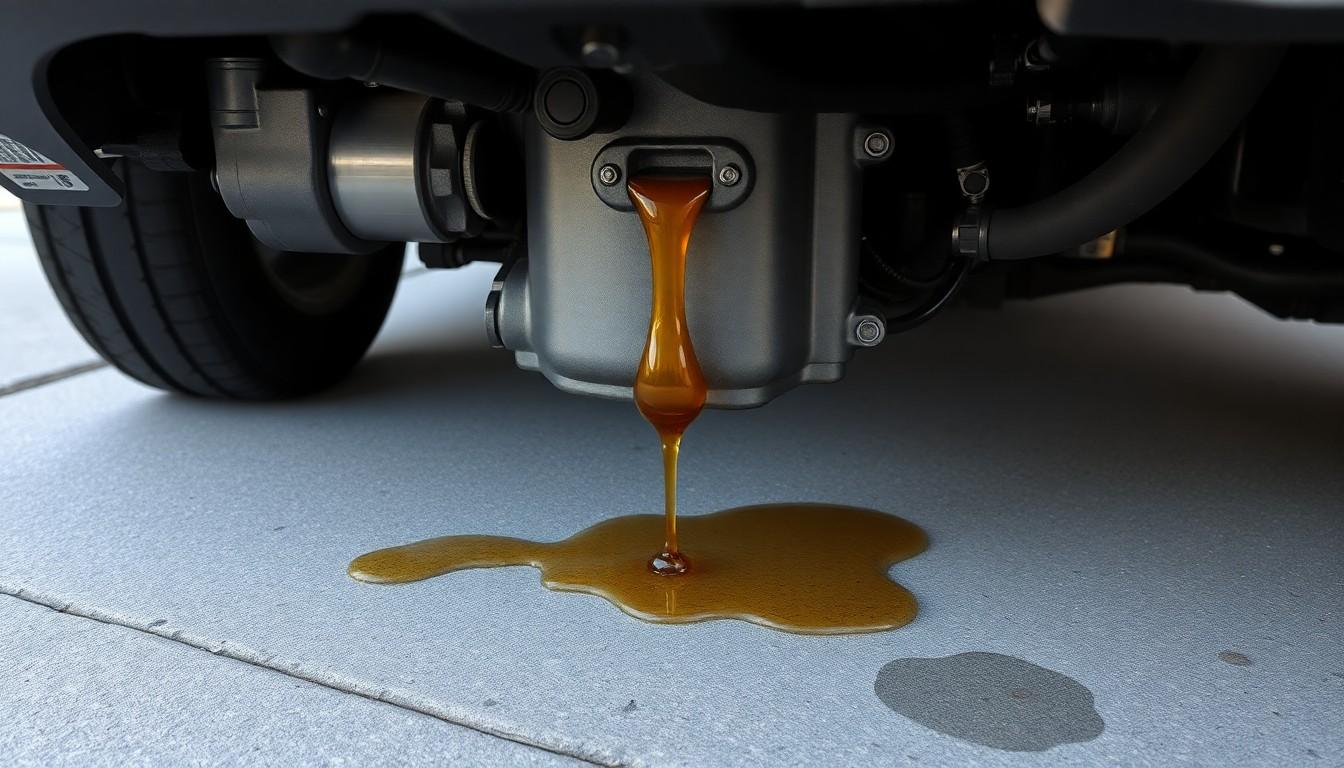
The severity of a rear main seal leak directly impacts how long you can safely drive your vehicle before repairs become critical. Understanding whether your leak is minor or severe helps determine your timeline for action.
Minor vs. Severe Leaks
Minor leaks typically present as small oil spots or slow drips, allowing you to drive for several days to weeks while monitoring the situation. These slow leaks don’t immediately threaten engine function but require regular oil level checks to prevent potential damage. You’ll notice minimal oil consumption with minor leaks, perhaps needing to add a quart every 500-1,000 miles.
Severe leaks create substantial oil puddles under your vehicle and cause rapid oil level depletion, sometimes dropping noticeably within hours or a single day of driving. Continuing to drive with a severe rear main seal leak risks catastrophic engine failure, including seized bearings and permanent engine damage. Your vehicle might lose multiple quarts over a short distance, making even short trips dangerous without immediate attention.
How to Determine Your Leak’s Severity
Regular oil level monitoring provides the clearest indication of leak severity. Check your dipstick daily when you suspect a rear main seal leak, noting how quickly the level drops between checks. A drop of more than half a quart within 100 miles signals a serious leak requiring immediate attention.
Visual inspection helps confirm the source and severity of the leak. Clean the underside of your engine thoroughly, then place clean cardboard beneath your parked vehicle overnight. Large oil spots or puddles indicate severe leakage, while small drops suggest a minor issue.
Examining your transmission area offers valuable diagnostic information. Oil accumulation on the transmission bell housing or rear engine area typically indicates a rear main seal problem. Remove the transmission inspection plate if possible to look for oil on the flywheel or flexplate, confirming the leak’s source.
Driving conditions significantly affect leak progression. High temperatures, extended highway driving, and heavy engine loads can transform a minor leak into a severe one by increasing pressure on the damaged seal. Short trips in moderate temperatures might slow the leak’s progression temporarily.
How Long Can You Drive With a Leaking Rear Main Seal
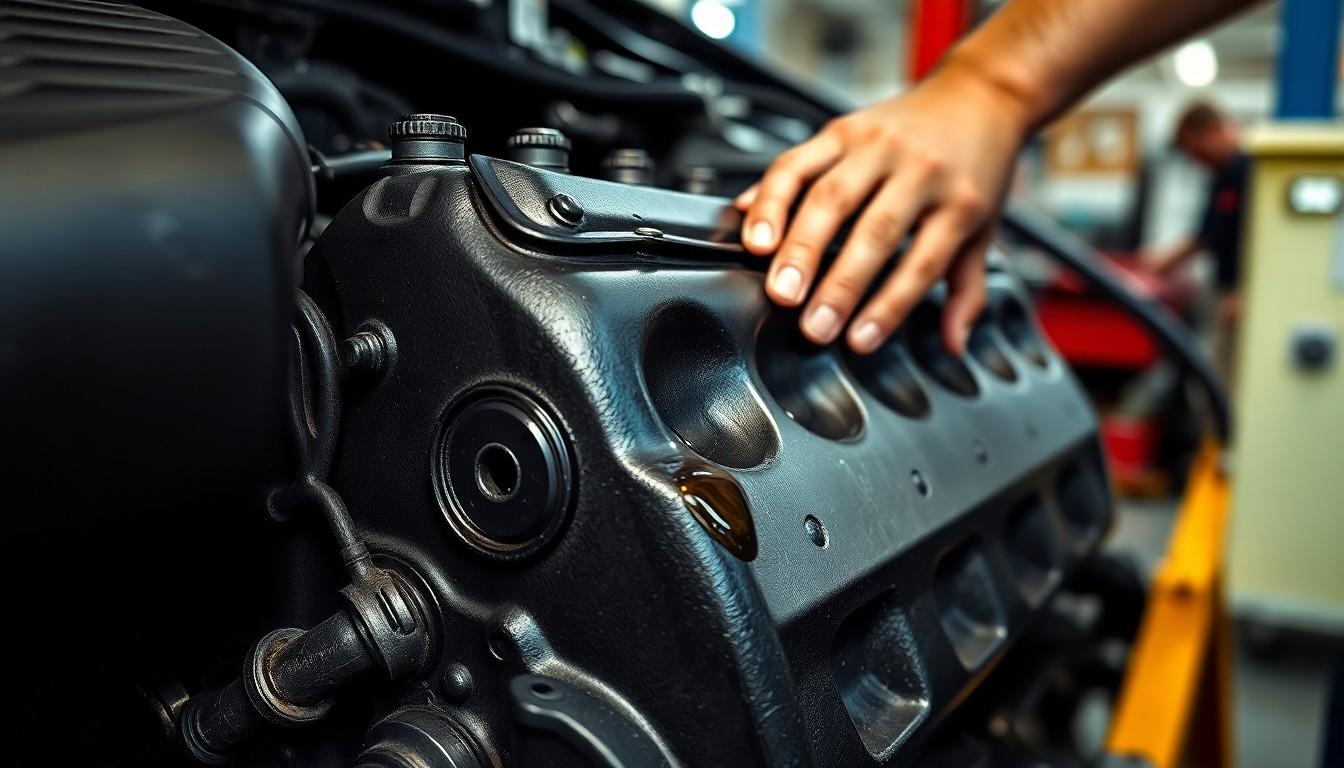
Driving with a rear main seal leak presents varying levels of risk depending on the severity of the leak and distance traveled. The timeframe you can safely operate your vehicle ranges from a few days to mere hours based on how quickly oil is being lost.
Short-Term Driving (Under 100 Miles)
Minor rear main seal leaks might allow for limited short-term driving under careful conditions. You can potentially drive for a few days or weeks with a slow leak, provided you’re diligent about monitoring your oil levels frequently. Checking your dipstick before each trip becomes essential during this period to ensure adequate lubrication for engine components. Topping off your oil as needed helps prevent the catastrophic damage that can occur from running your engine with insufficient oil levels.
Medium-Term Driving (100-500 Miles)
Attempting medium-distance travel with a rear main seal leak significantly increases the risk to your engine. Moderate leaks deplete oil much faster, making it dangerous to drive these distances without addressing the issue. Your engine components face accelerated wear from inadequate lubrication at this stage, potentially leading to overheating and mechanical failures. We’ve seen many cases where drivers attempting trips in this range experienced serious engine damage that could have been avoided with timely repairs.
Long-Term Risks (500+ Miles)
Long-distance driving with a leaking rear main seal virtually guarantees extensive engine damage. Continuous operation allows the leak to progressively worsen, causing rapid oil depletion that leaves critical components unprotected. Your crankshaft, bearings, and other vital engine parts become vulnerable to heat damage and metal-on-metal contact. Oil leaking onto other vehicle components creates additional complications, coating everything from the exhaust system to suspension parts. The repair costs from this extended neglect typically far exceed what addressing the issue promptly would have required, sometimes necessitating complete engine replacement.
Potential Consequences of Continued Driving
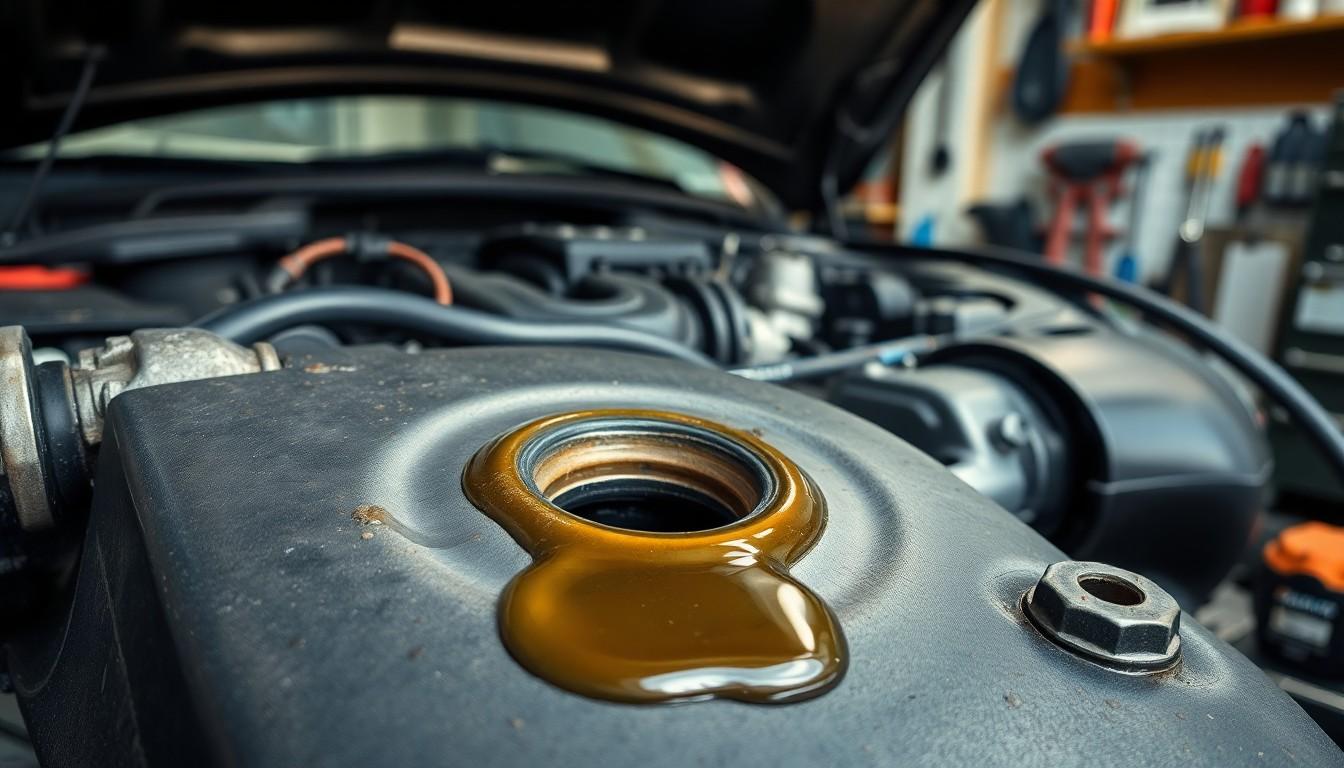
Driving with a rear main seal leak exposes your vehicle to serious risks that extend beyond simple oil loss. These consequences can impact both your engine’s health and your safety on the road.
Engine Damage Possibilities
A leaking rear main seal leads to dangerously low oil levels, causing permanent engine damage. Your crankshaft, bearings, and other critical engine components suffer from insufficient lubrication when oil levels drop below minimum thresholds. Engine parts that normally glide smoothly against each other begin to create excessive friction and heat, accelerating wear at an alarming rate. The leak doesn’t just affect the rear main seal area—it can trigger a cascade of failures by deteriorating other engine seals and gaskets. Many drivers experience complete engine seizure after prolonged driving with a important rear main seal leak, resulting in repair costs that often exceed the vehicle’s value.
Safety Concerns on the Road
Oil leaks create genuine safety hazards for you and other motorists. Engine failure caused by low oil levels can occur suddenly while driving at highway speeds, potentially causing loss of power steering, braking assistance, and vehicle control. The continuous dripping of oil onto hot engine components generates smoke and burning smells that can distract you from focusing on the road. Oil that reaches the road surface creates slippery conditions similar to ice, particularly dangerous at intersections where other vehicles might lose traction. The risk intensifies during rainy conditions when oil mixes with water, creating an even more hazardous driving surface. Many accidents have been attributed to oil-slicked roads caused by vehicles with important fluid leaks.
Temporary Solutions While Planning Repairs
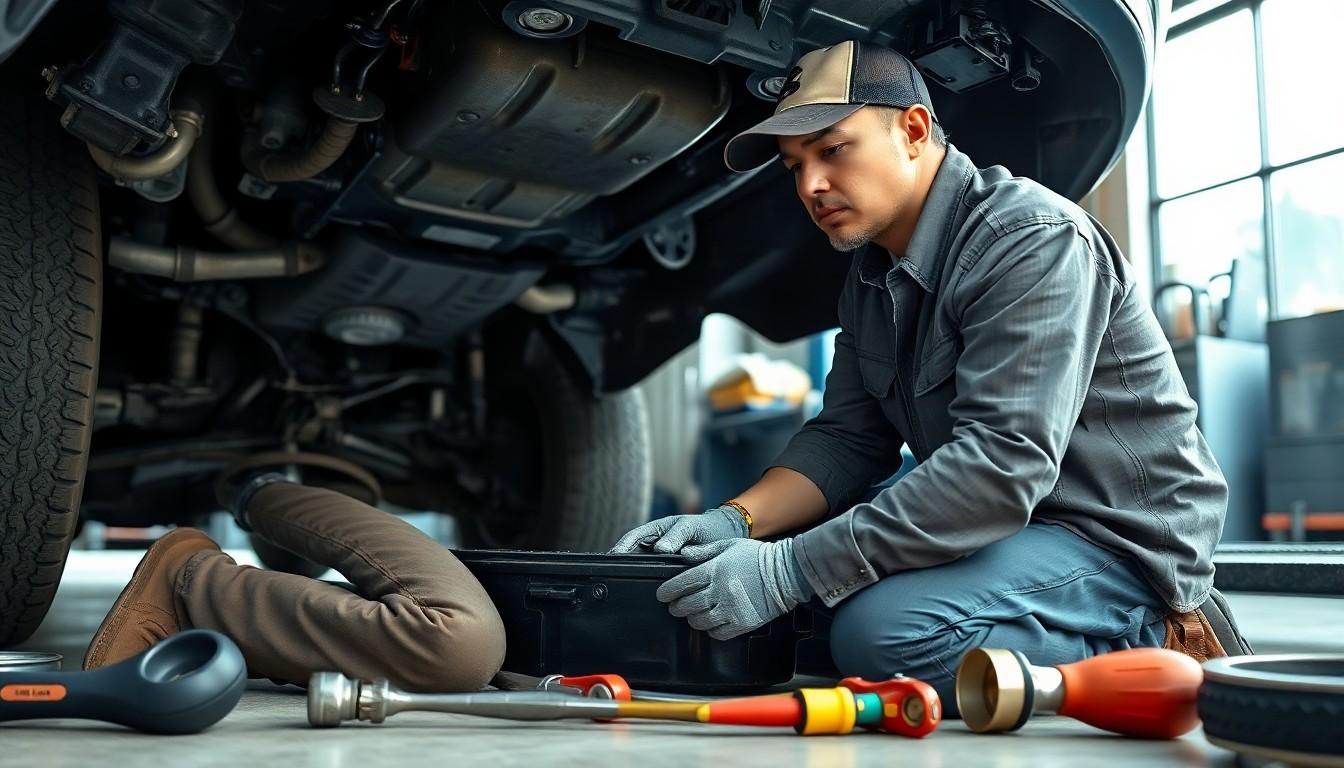
Temporary answers for rear main seal leaks can buy you valuable time while arranging proper repairs. These short-term fixes help manage the leak without addressing the underlying issue, making them suitable only as interim measures.
Stop-Leak Products: Do They Work?
Stop-leak products offer a potential temporary fix for minor rear main seal leaks but come with important limitations. These additives are designed to soften and condition the seal material, potentially causing it to expand and close small gaps. Products like BlueDevil Rear Main Sealer or ATP AT-205 might reduce leakage in cases where the seal has simply dried out or slightly shrunk. Their effectiveness diminishes substantially with larger or more severe leaks, often providing no benefit for significantly damaged seals. Many professional mechanics caution against relying on these products as they don’t address the fundamental problem and can occasionally affect oil viscosity or contaminate other engine components. Using stop-leak additives might be reasonable for vehicles nearing the end of their service life or when you’re preparing for proper repairs within a short timeframe.
Monitoring Oil Levels and Pressure
Regular monitoring becomes essential when driving with a rear main seal leak, regardless of whether you’ve applied temporary answers. Checking your oil level every 1-2 days helps prevent catastrophic engine damage from inadequate lubrication. Modern vehicles typically display warning lights when oil pressure drops dangerously low, but these warnings often appear only after damage has begun. Oil pressure gauges provide earlier detection of developing problems, making them valuable monitoring tools. Signs of dropping pressure require immediate attention, as they indicate the leak may be worsening. Carrying extra oil in your vehicle allows for immediate topping off when levels drop below the minimum mark on the dipstick. Each oil check also presents an opportunity to assess the leak’s severity by noting how quickly levels are decreasing. Thorough monitoring extends the safe driving window while awaiting repairs, though this period remains fundamentally limited by the leak’s severity.
When to Seek Immediate Repairs

A rear main seal leak requires prompt attention to prevent catastrophic engine damage and costly repairs. While minor leaks might allow for limited driving time, certain situations demand immediate action rather than postponement.
Warning Signs That Can’t Be Ignored
Important oil loss represents the most urgent warning sign requiring immediate repair. When your vehicle loses substantial oil within a short timeframe, this indicates a severe leak that’s rapidly depleting your engine’s critical lubrication. Persistent oil stains under your parked vehicle, particularly near the transmission bell housing area, signal an active leak that shouldn’t be dismissed. These telltale drips often appear dark and concentrated, distinguishing them from other fluid leaks.
Oil on the flywheel or flexplate provides definitive evidence of a rear main seal failure. This can be confirmed by examining through your transmission’s inspection plate, where engine oil shouldn’t normally be present. Regular monitoring showing dangerous drops in oil levels between checks indicates your engine is consuming oil at an unsafe rate, putting vital components at risk.
Extreme temperature exposure often accelerates seal deterioration, making the leak worse in hot or very cold conditions. Aging seal material displays visible signs of wear including cracking, hardening or excessive softening, all pointing to imminent failure. Blue-gray exhaust smoke suggests oil is entering the combustion chamber, indicating the problem has worsened beyond just external leakage.
Manual transmission vehicles may exhibit clutch slippage when oil contaminates the clutch disc, creating an additional mechanical problem beyond the leak itself. Burning oil smells, especially noticeable after driving, indicate oil is contacting hot engine components and requires immediate attention before a fire hazard develops.
Cost Considerations for Rear Main Seal Replacement
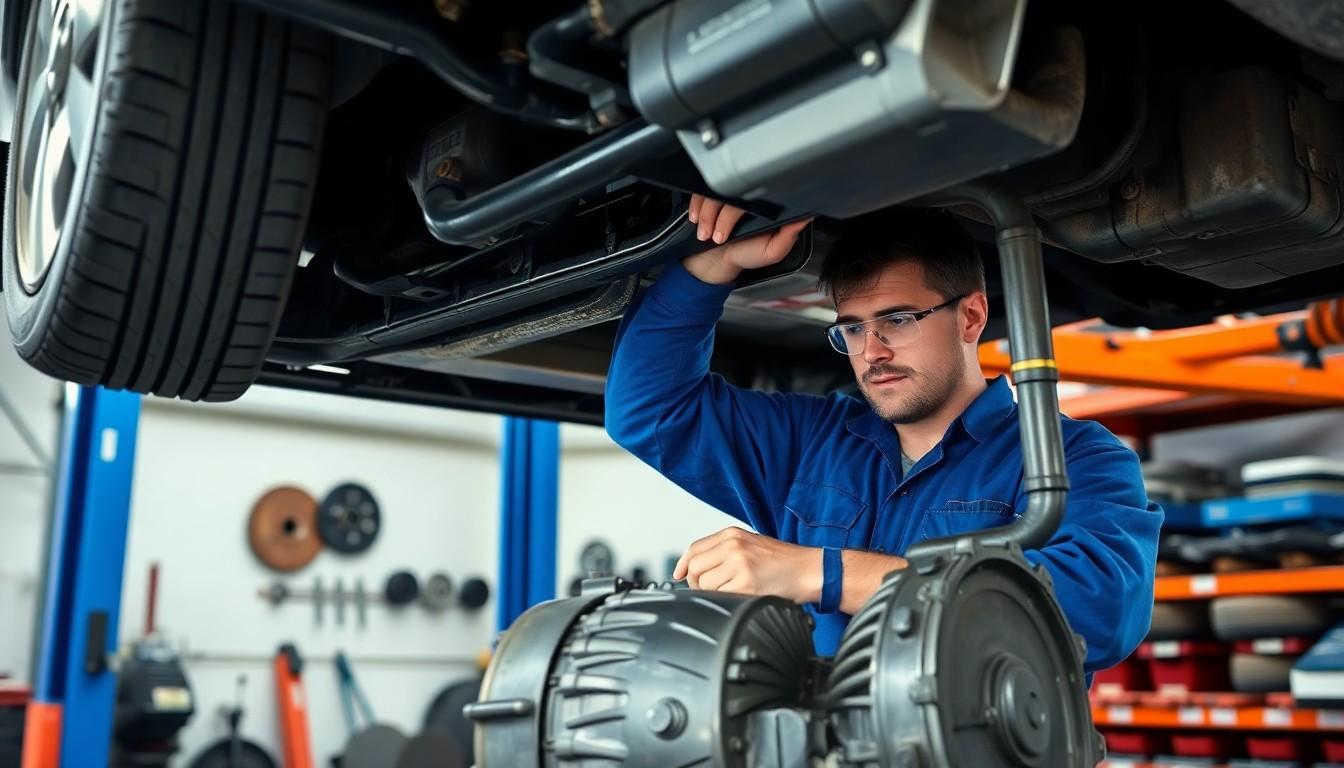
Rear main seal replacement costs vary significantly depending on your approach to fixing the problem. Understanding the financial implications of both DIY and professional repairs helps you make an well-informed choice when facing this common issue.
DIY vs. Professional Repair
DIY Repair
DIY rear main seal replacement typically costs less upfront since you’re only purchasing the replacement seal and necessary tools. The seal itself is relatively inexpensive, often ranging from $20-50 depending on your vehicle make and model. This approach requires important mechanical skill and substantial time investment, often taking 6-10 hours for someone with experience. Many DIYers underestimate the complexity of accessing the rear main seal, which typically requires removing the transmission and sometimes the engine. Improper installation can lead to continued leaks, repeated work, and potentially more damage to your engine components, resulting in higher long-term costs than the initial savings justified.
Professional Repair
Professional rear main seal replacement typically costs between $800-2,000 depending on your vehicle type and local labor rates. Labor makes up the majority of this expense since mechanics must disassemble major components to access the seal. Luxury or high-performance vehicles generally fall at the higher end of this price range due to more complex designs and specialized parts. Professional repairs offer several advantages, including proper diagnosis to confirm the leak source, experienced handling of complex disassembly, and warranties on both parts and labor. Most repair shops complete this job within 1-2 days, significantly faster than most DIY attempts.
Additional repair costs may arise if the leak has caused damage to other components such as the crankshaft, transmission, or engine bearings. Mechanics often recommend replacing the flywheel or flexplate seals simultaneously since they’re accessing the same area, adding a small cost but preventing future related issues. Regular maintenance including proper oil changes and avoiding extended periods of engine disuse can help prevent premature seal failure, saving you from this expensive repair altogether.
Conclusion
Driving with a rear main seal leak is a risky proposition that requires careful assessment. While minor leaks may allow limited driving time with vigilant monitoring, severe leaks demand immediate attention.
We’ve seen how these leaks can rapidly escalate from a simple oil spot to catastrophic engine failure. The cost of repair now is significantly less than an engine replacement later.
Your safety and vehicle’s longevity should be the priority. Remember that temporary answers like stop-leak products only buy time rather than fix the underlying issue.
Don’t gamble with your engine’s health. Whether you choose DIY or professional repairs consider it an investment in your vehicle’s future. Regular maintenance remains your best defense against unexpected and costly rear main seal failures.
Frequently Asked Questions
What is a rear main seal leak?
A rear main seal leak occurs when the seal between the crankshaft and transmission fails, allowing engine oil to escape. This seal is critical for keeping oil contained within your engine’s crankcase. When damaged, it creates oil puddles typically near the back of the engine or around the transmission connection point.
How can I identify a rear main seal leak?
Look for oil spots beneath your vehicle (especially under the transmission area), low engine oil levels, a burning oil smell, and oil on the transmission case. In more advanced cases, you might notice blue-gray exhaust smoke or clutch slippage in manual transmission vehicles.
Can I drive with a leaking rear main seal?
You can drive for a limited time with a minor leak if you closely monitor oil levels. For small leaks, short trips (under 100 miles) may be possible with frequent oil checks. However, moderate to severe leaks require immediate attention, as continued driving risks catastrophic engine damage.
How long will a rear main seal leak last before major damage occurs?
Without repair, a minor leak might allow several days to weeks of careful driving with regular oil monitoring. Moderate leaks significantly reduce this timeframe to days or less. Severe leaks can cause engine failure within hours or even minutes of driving as oil depletes rapidly.
Will stop-leak products fix my rear main seal leak?
Stop-leak products may temporarily help with minor leaks by conditioning and softening the seal material. However, they’re not effective for moderate to severe leaks and don’t provide a permanent solution. These products should only be considered a short-term measure while planning proper repairs.
What happens if I ignore a rear main seal leak?
Ignoring the leak can lead to catastrophic engine damage from insufficient lubrication, potential engine seizure, and repair costs exceeding your vehicle’s value. Additionally, leaked oil creates road hazards, increasing accident risk, especially in wet conditions.
How much does it cost to repair a rear main seal leak?
Professional repair typically costs between $800-$1,800, depending on your vehicle make and model. DIY repairs cost less in parts ($30-$100 for the seal) but require substantial mechanical skill and special tools. Labor accounts for most of the professional repair cost due to the extensive disassembly required.
What are the critical warning signs that I need immediate repair?
Seek immediate repairs if you notice rapid oil consumption (more than a quart per 100 miles), persistent large oil spots, visible oil on the flywheel/flexplate, blue-gray exhaust smoke, clutch slippage, or engine warning lights. These symptoms indicate a severe leak requiring urgent attention.
Can regular maintenance prevent rear main seal leaks?
Yes, regular maintenance helps prevent premature seal failure. Routine oil changes with manufacturer-recommended oil, avoiding excessive engine heat, and addressing minor leaks promptly can extend seal life. Also, limit high-RPM driving and maintain proper engine operating temperatures.
Is it safe to use thicker oil as a temporary solution?
Using slightly thicker oil might temporarily slow a minor leak but won’t fix the underlying problem. This approach can cause additional issues, including reduced engine efficiency and potential damage to other components. It’s not recommended as a long-term strategy for managing a rear main seal leak.

